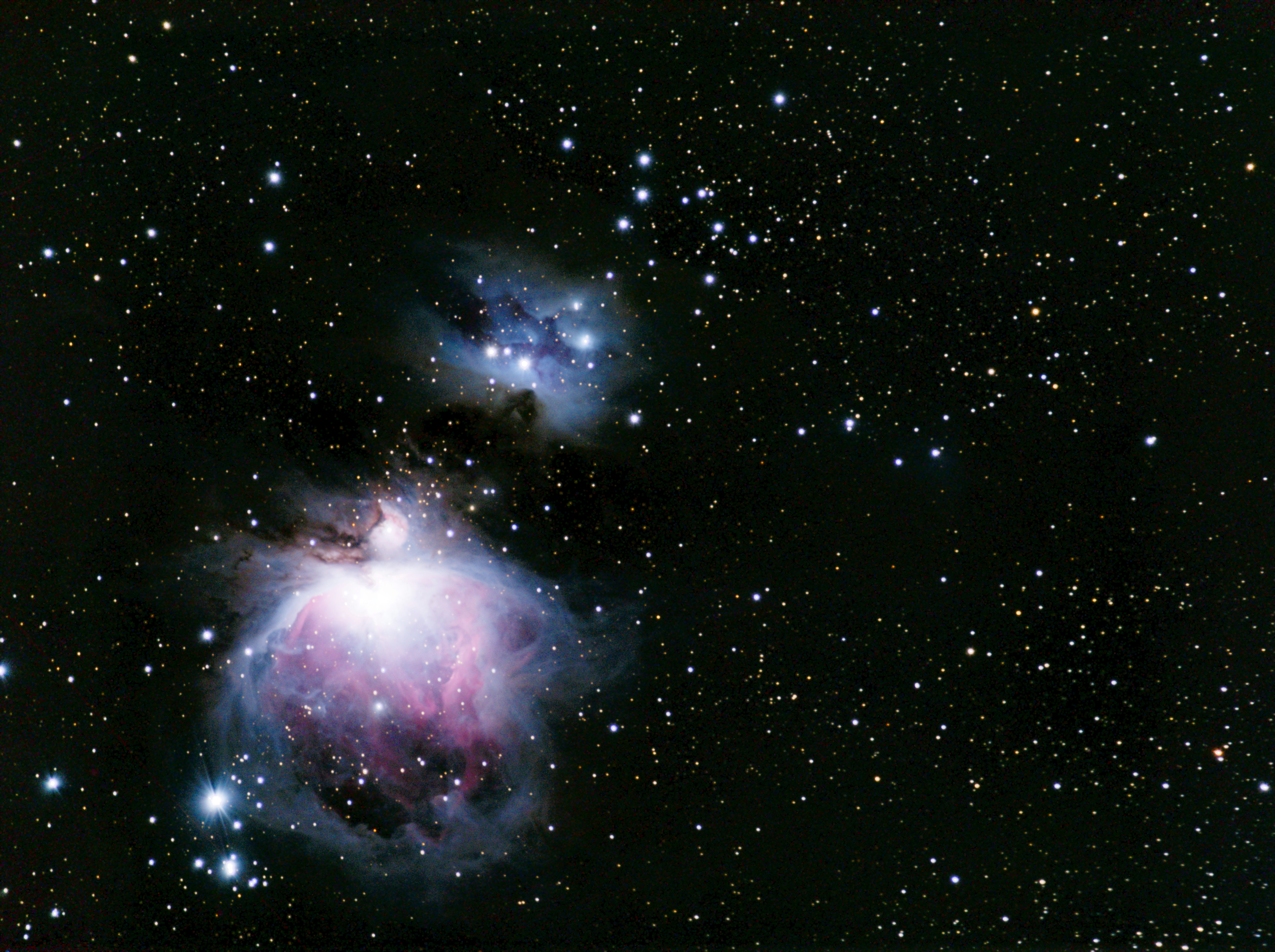A few years ago I had the opportunity to capture the Orion Nebula using my mirrorless micro 4/3 camera and my star tracker. This image was created by taking 100 30 second exposures, and stacking them using DeepSkyStacker. The focal length was 300mm full-frame equivalent.
Equipment Used
- Camera: Olympus OM-D EM1 MK3
- Lens: M.Zuiko ED 100-400mm
- Star Tracker: iOptron Skyguider Pro
- Tripod: Peak Design Carbon Fiber Travel Tripod
- Stacking Software: DeepSkyStacker
- Post-Processing Software: Gimp and Siril
Photo Settings
- ISO: 3200
- F-stop: f/7.1
- Exposure: 30 sec.
Challenges and Learnings
I had to make several attempts at creating this image, over several nights. The biggest challenge I had was making sure the background stars were in absolutely perfect focus. This is necessary because DeepSkyStacker is pretty bad at dealing with stars that are even slightly out of focus. It screws up the stacking software, and makes it so it can only find a few stars.
I also had to set up my sky tracker in such a way so as to mitigate the effects of wind moving the camera around. I did this by hiding my camera behind my car to shield it. I then got everything set up with my camera, and pointed it at the nebula. My camera has a setting that allows it to take repeated 30 second exposures automatically, so I was able to just sit in my car, setup a little bed, and eat pizza while I waited for my camera.
I learned that refocusing your camera throughout the night is necessary, because the temperature changes through the night can cause the focus to shift. This is caused by the lens elements expanding and contracting due to the temperature changes. A good rule of thumb is to refocus every .5° - 1° C.
Final Image

Conclusion
This was my first truly successful astrophotography attempt, and it makes me so excited to see what I'll be able to capture in the future. It's also nice to know that DeepSkyStacker actually works, because I was starting to wonder if everyone online was just gaslighting me lol.